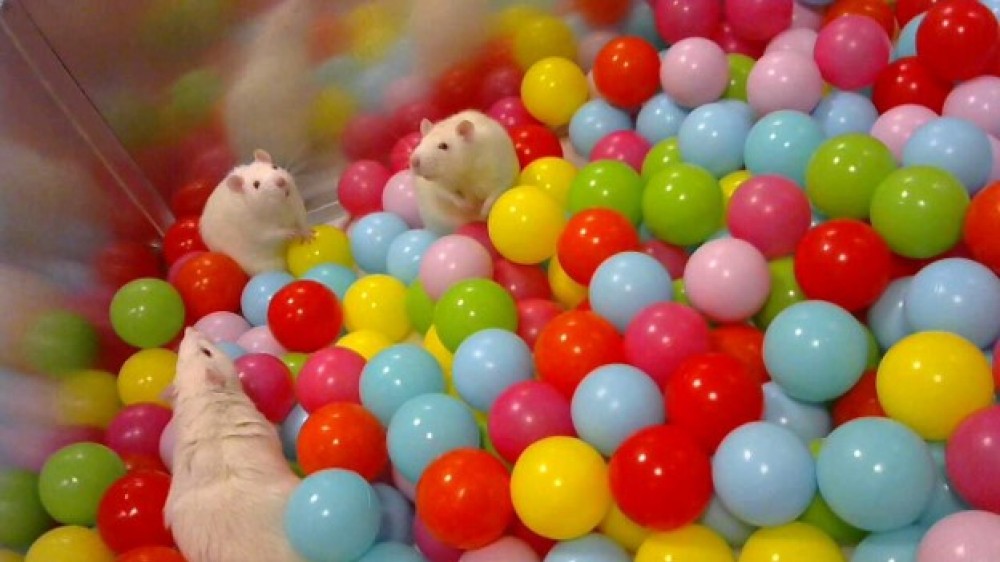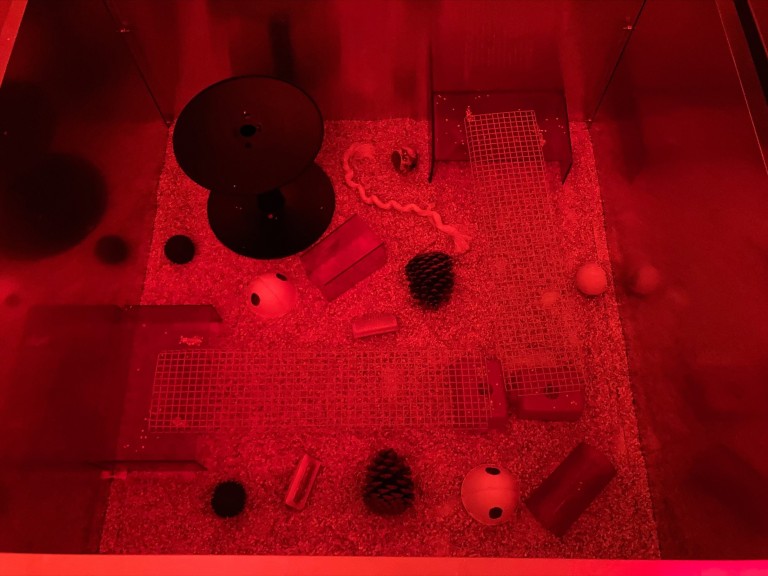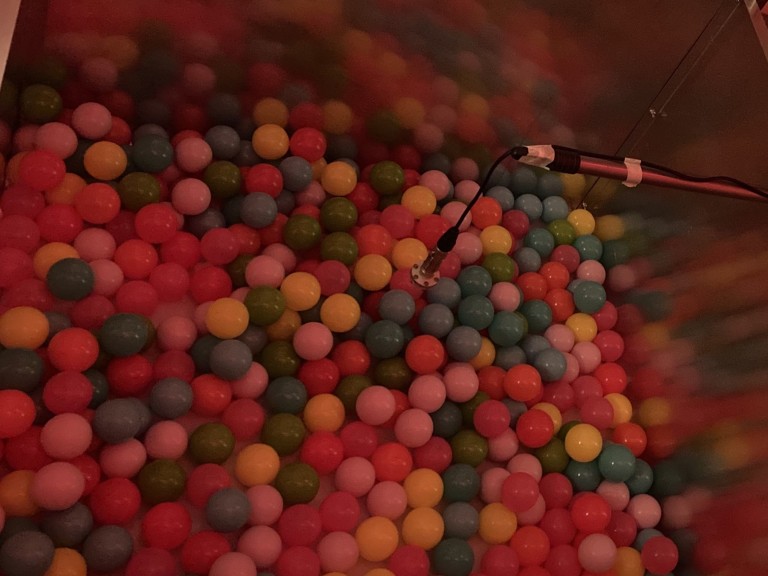Playpen access improves rat welfare

New paper demonstrates the positive welfare effects of rat playpens.
Read the full paper by NC3Rs grant holder Professor Emma Robinson and colleagues from the University of Bristol: The use of ball pits and playpens in laboratory Lister Hooded male rats induces ultrasonic vocalisations indicating a more positive affective state and can reduce the welfare impacts of aversive procedures.
There is growing evidence to suggest that providing rats with access to playpens – enclosures containing a wider range of environmental enrichment items than standard caging – improves their overall welfare. During playpen sessions rats can perform species-specific behaviours, including upright stretching, burrowing, and climbing. Facilitating natural behaviours such as these has been shown to promote good physiological and psychological health [2], which reduces animal-to-animal variability and improves the quality of data obtained from animal models [3-5].
Rats who are able to use a space that is larger and more structurally complex than standard housing are reported to be calmer and more confident when handled. In their new paper, Professor Emma Robinson and colleagues add to this evidence base, showing that spending time in a playpen increases indicators of positive affective state (mood) in rats and reduces the impact of a negative experience. This work has been published in Laboratory Animals.

Emma and the team used an affective bias test to look at the impact of playpen sessions on male Lister Hooded rats that had been given FG7142, a drug known to induce an anxious state. After spending one hour in a playpen, the negative effect of FG7142 on the rats’ mood was significantly reduced, suggesting playpen access could be used to refine studies that involve aversive procedures.
The team also showed that rats found exploration of a playpen to be a positive experience. The welfare state of rats can be measured by recording the frequency of their ultrasonic vocalisations. Calls that fall in the 50kHz range are associated with positive experiences such as mating, playing, consuming food and being tickled by humans, and thus can be used as a way to quantify welfare. During exploration of a ball pit or playpen arena, rats emitted significantly more 50kHz vocalisations than when they spent time within an empty ‘control’ arena.

Overall, this study adds to the increasing evidence that providing rats with access to a designated enriched space outside of their standard caging has a positive effect on their welfare and can diminish the impact of a negative experience. Playpens also present an opportunity to improve data validity and generalisability by promoting good physical fitness and normal physiology in rats, health factors that are commonly adversely affected by conventional research housing.
We have created a rat playpen resource containing advice on how to set up a playpen for rats in your facility. Visit the resource to find answers to frequently asked questions and additional information on the benefits of incorporating playpens into standard husbandry practice.
References
- Hinchcliffe JK et al. (2022). The use of ball pits and playpens in laboratory Lister Hooded male rats induces ultrasonic vocalisations indicating a more positive affective state and can reduce the welfare impacts of aversive procedures. Laboratory Animals, in press. doi: 10.1177/00236772211065920
- Makowska IJ and Weary DM (2016). The importance of burrowing, climbing and standing upright for laboratory rats. Royal Society Open Science 3: 160136. doi: 10.1098/rsos.160136
- Poole T (1997). Happy animals make good science. Laboratory Animals 31: 116-24. doi: 10.1258/002367797780600198
- Martin B et al. (2010). "Control" laboratory rodents are metabolically morbid: Why it matters. PNAS 107(14): 6127–33. doi: 10.1073/pnas.0912955107
- Richter SH et al. (2009). Environmental standardization: cure or cause of poor reproducibility in animal experiments? Nature Methods 6(4): 257–61. doi: 10.1038/nmeth.1312
Advice on how to set up a playpen for rats in your facility, including FAQs and additional information on the benefits of incorporating playpens into standard husbandry practice.
